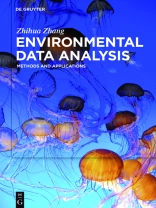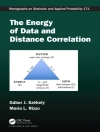Most environmental data involve a large degree of complexity and uncertainty. Environmental Data Analysis is created to provide modern quantitative tools and techniques designed specifically to meet the needs of environmental sciences and related fields. This book has an impressive coverage of the scope. Main techniques described in this book are models for linear and nonlinear environmental systems, statistical & numerical methods, data envelopment analysis, risk assessments and life cycle assessments. These state-of-the-art techniques have attracted significant attention over the past decades in environmental monitoring, modeling and decision making. Environmental Data Analysis explains carefully various data analysis procedures and techniques in a clear, concise, and straightforward language and is written in a self-contained way that is accessible to researchers and advanced students in science and engineering. This is an excellent reference for scientists and engineers who wish to analyze, interpret and model data from various sources, and is also an ideal graduate-level textbook for courses in environmental sciences and related fields.
Contents:
Preface
Time series analysis
Chaos and dynamical systems
Approximation
Interpolation
Statistical methods
Numerical methods
Optimization
Data envelopment analysis
Risk assessments
Life cycle assessments
Index
विषयसूची
Table of content:
Preface
Chapter 1. Time Series Analysis
1.1. State Estimation
1.2. Power Spectrum
1.3. Optimal Filtering
1.4. State Space Models
1.5. Information Theory
1.6. Complex Networks
Chapter 2. Dynamical Systems
2.1. State-Space Reconstruction
2.2. Determinism and Predictability
2.3. Embedding Methods
2.4. Lyapunov Exponents
2.5. Modelling and Forecasting
2.6. Chaos and nonlinear noise reduction
Chapter 3. Approximation
3.1. Trigonometric Approximation
3.2. Polynomial Approximation
3.3. Spline Approximation
3.4. Rational Approximation
3.5. Wavelet Approximation
3.6. Multivariate Approximation
3.7. Dimensionality reduction
3.8. Adaptive Basis Selection and Greedy Algorithm
Chapter 4. Interpolation
4.1. Curve Fitting
4.2. Lagrange Interpolation
4.3. Hermite Interpolation
4.4. Spline Interpolation
4.5. Case Studies
Chapter 5. Satistical Methods
5.1. Linear Regression
5.2. Logistic Regression
5.3. Multiple Regression
5.4. Analysis of Covariance
5.5. Cluster Analysis
5.6. Discriminant Analysis.
5.7. Principal Component Analysis
5.8. Factor Analysis
5.9. SPSS software
Chapter 6. Numerical Methods
6.1. Numerical Integration
6.2. Numerical Differentiation
6.3. Direct and Iterative Methods
6.4. Finite Difference Methods.
6.5. Finite Element Methods.
6.6. Finite Volume Methods
6.7. Wavelet Methods
Chapter 7. Optimization
7.1. Steepest Descent and Newton methods
7.2. Linear optimization
7.3. Lagrange multipliers
7.4. Karush-Kuhn-Tucker conditions
7.5. Primal-dual interior-point method
7.6. The simplex method
7.7. Stochastic optimization
Chapter 8. Risk Assessments
Chapter 9. Life Cycle Assessments
लेखक के बारे में
Zhihua Zhang, Beijing Normal University, Beijing, China.












